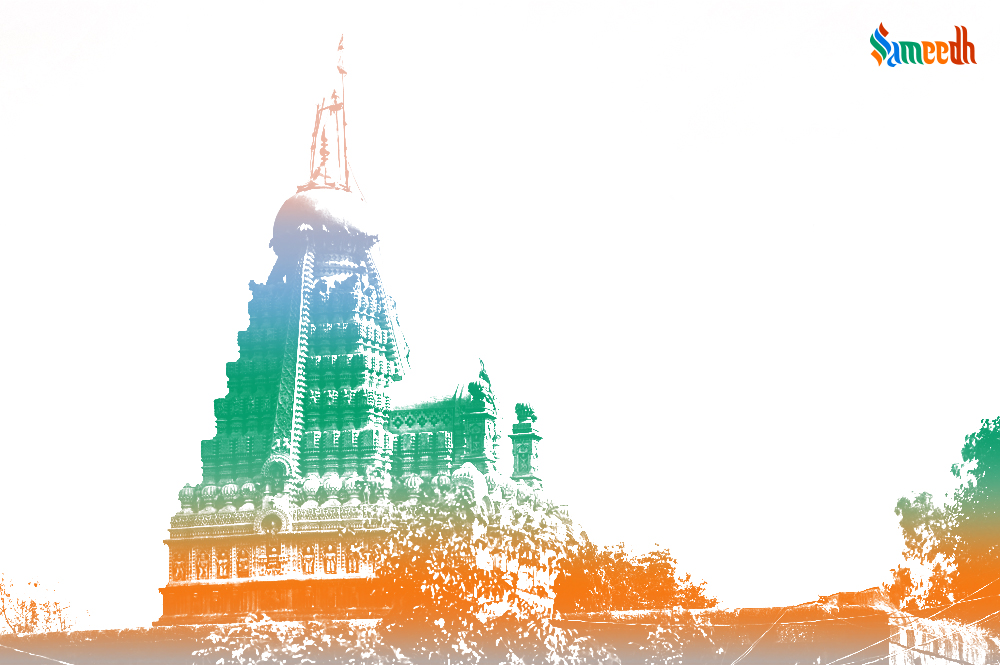Jyotirlings means self-manifested pillars of light, representing the supreme Lord Shiva. The last among the twelve of them is Grishneshwar without which the pilgrimage is considered incomplete.

LOCATION
Grishneshwar Jyotirling is one of the shrines dedicated to Lord Shiva that has reference in the Shiv Puran. The temple is an important pilgrimage site in the Shaiva tradition of Hinduism, which considers it as the last or twelvth Jyotirling. This site is located less than a kilometre from Ellora. It is about 30 kilometres north-west of the city of Aurangabad, and about 300 kilometres east-northeast from Mumbai.
MYTHOLOGY
Once Shiv and Parvati were playing chess and Parvati checkmated Shiv. He got annoyed at this and went away southward to a place on the Sahyadri range, where the breeze was cool. Parvati came there looking for him and won his heart in the form of a tribal mountain girl. They both spent some time there happily. One day, Parvati felt thirsty and he pierced Earth with his trident and got the water of Bhogavati from the Patal lok. This is known as the Shivalay. Once Parvati, was about to fill her maang with vermillion and saffron. She took them in her left palm and mixed the water of Shivalay in it. With the right thumb she started mixing them both. Then a miracle occurred, vermillion turned into a Shivling and a great light appeared in it. She installed it there and it is called Kumkumeshwar; but, since Dakshayani created this ling with the function of her thumb, she gave it the name of Grishneshwara (Grishna means friction).
On the southern mountain called Dev Parvat, a brahmin Brahmavetta Sudharm, used to live with his beautiful, devout wife called Sudeha. They had no children and were unhappy. They were childless, and an agonized Sudeha persuaded her sister Ghushma to marry Sudharm so that they could have a child together. After sometime, Gushma gave birth to a son. But eventually jealousy got better of Sudeha and she killed Dushma’s son who was sleeping by her side. A deeply grieving Gushma continued with her routine. During her morning ritual of visiting the lake where she usually made and worshipped a hundred Linga, she saw her son emerging from the lake. Then Lord Shiva appeared before her and said that Sudeha had killed her son. Pleased with Gushma’s devotion, he gave back her son and also granted her a boon. Then Ghushma requested the Lord to forgive her sister and also to remain in the place. The Lord accepted her request and continued to reside there in the form of a Jyotirling. Hence, he took the name Ghushmeshwar in Gushma’s honour.
SIGNIFICANCE
Considered highly mystical shrines of Lord Shiv, it is supposed to bestow peace and tranquillity. He blesses devotees to have a composed life and reach a higher level of spirituality. Many people who come to this temple believe that it is with the mercy of Lord Shiv that they are able to reunite with the family. Anyone can enter the temple premises and its inner chambers, but to enter the sanctum sanctorum core (garbha-gruha) of the temple, the local Hindu tradition demands that men must go bare-chested.
ARCHITECTURE
The Grishneswar temple has a close resemblance to the South Indian architectural style and structure. The temple is five-layered and built using red-coloured bricks. This is also regarded as the smallest Jyothirling temple. This 240ft x 185 ft temple is still strong and beautiful as ever. Halfway up the temple, Dashavatars are carved in red stone. These are beautiful to look at. There are also other beautiful statutes carved out. A court hall is built on 24 pillars. On these pillars there are wonderful carvings. The scenes and paintings are beautiful. The Garbhagriha measures 17ft x 17 ft. The Ling faces eastward. There is a gorgeous Nandikeshwar in the court hall.
THE PLACE DURING DIFFERENT PERIODS OF TIME
The temple was destroyed completely by Islamic Invasions in the 13th century. King Maloji Bhosale of Verul, the grandfather of King Shivaji, initiated the construction of this temple in the 13th century. This temple was later reconstructed in the 16th century by Queen Ahilyabai Holkar. She was instrumental in renovating some of the other major Hindu shrines in India, like the Kashi Vishwanath temple in Varanasi. The temples located in Gaya for Lord Vishnu and the Somnath temple for Lord Shiva were also built by the queen.
HOW TO REACH GRISHNESHWAR
The nearest international airport is in Aurangabad. The nearest railway station is in Aurangabad. The city of Aurangabad is well connected to most of the cities. Local transport is available in plenty. The city offers frequent bus service and connects to most of the important cities.
To know more about Hinduism, its places of religious importance, pilgrimage routes, its famous temples, etc. or for any special need like conducting a pooja at your home please visit our website Sameedh.